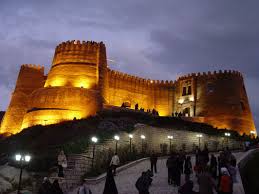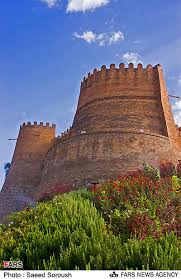
دنیای زبان انگلیسی ( بهروزپور )
لغات و اصطلاح .داستان کوتاه . شعر.جوک .ضرب المثل.اشپزی.رمان. نمایشنامه.متن دوزبانه
دنیای زبان انگلیسی ( بهروزپور )
لغات و اصطلاح .داستان کوتاه . شعر.جوک .ضرب المثل.اشپزی.رمان. نمایشنامه.متن دوزبانهدرباره من
روزانهها
همه- queen.blogfa.com
- وبلاگ زبان انگلیسی دبیرستان سمپاد ملایر
- Join to English
- *´`·.. • • • POEM • • •..·´`*
- rasol academy
- poem
- آموزش زبان انگلیسی
- تدریس و ترجمه کلیه زبانها
- دهکده انگلیسی
- یادداشتهای هماره
- دانشجویان زبان انگلیسی
- شهرزبان
- دبیری زبان دانشگاه فرهنگیان
- English Barobax
- دنیای زبان من: آموزش زبان های خارجه
- وبلاگ آی زبان
- موفقیت من و تو در یادگیری زبان اموزش زبان
- خاطرات خاله نرگس
- دیدنی ها
- English village
- Language Garden
- وبلاگ پرویز ولد خانی
- سایه روشن
- اموزش زبان انگلیسی البیون
- جهان آموزش
- بهترین سایت آموزش انگلیسی رایگان و بزرگترین انجمن ایرانیان علاقه مند به انگلیسی
- خیابان انگلیسی
- آموزش زبان انگلیسی و فرانسه
- کتاب الکترونیکی زبان من /بهروزپور
- بغض چشم
- اموزش زبان انگلیسی دیالوگ
- زبان شناس آینده
- کتابخانه مجازی اموزش زبان لایبر
- love
- ترجمه انگلیسی قران
- An English Translator
- موفقیت من و تو در یادگیری زبان اموزش زبان
- مجموعه کتابهای الکترونیکی دانش و زندگی/رضا فریدون نژاد
- تخصصی کارشناسی ارشد ادبیات فارسی
- وبلاگ سمیرحسین نژاد
- نماز و نیایش
- مترجمی زبان انگلیسی - پیام نور اهواز
- وبلاگ ali rahimian
- در این وبلاک از جون آدمی زاد تا شیر مر غ می توان یافت
- دنیای زبان انگلیسی(رضایی)
- کالج زبان چهار دانگه
- Where a rainbow of our ideas is formed
- engelisi baraye jahane emrooz
- آموزش نرم افزار CATIA
- ترجمه انگلیسی قران
پیوندها
- معما
- شعر
- گرامر
- دیباچه
- fiction
- poetry
- poems
- کتاب نیوز
- دیکشنری
- کتاب سبز
- ازمون تافل
- تاریخ فلسفه
- Food Idioms
- نمایشنامه ها
- sms انگلیسی
- کتابهای صوتی
- تبیان انگلیسی
- Literary Terms
- اصطلاحات ادبی
- اشعار انگلیسی
- ادبیات انگلیسی
- دیکشنری انلاین
- ادبیات انگلیسی
- اموزش انگلیسی
- دنیای ضرب المثل
- تمام اثار شکسپیر
- یادگیری انگلیسی
- دیکشنری تصویری
- دیکشنری تصویری
- business writing
- اشپزی (انگلیسی)
- 180 شعر انگلیسی
- دانلودکتابهای صوتی
- رسم الخط انگلیسی
- آموزش گرامر تصویری
- مکالمه های انگلیسی
- انگلیسی برای کودکان
- سایت سهراب سپهری
- The Quotations Page
- نویسندگان مشهور جهان
- دیکشنری تصویری اینترنتی
- توانایی های ضروری زندگی
- صدهاداستان (متن و صوت)
- نقل قول های زیبای تصویری
- سایتی برای متنهای دو زبانه
- سایت اسلامی به انگلیسی
- شعر انگلیسی برای کودکان
- دانلود رایگان رمانهای خارجی
- راهنمای انگلیسی (تصویری)
- Middle Ages (ارشیو صوتی)
- داستانهای کوتاه برای کودکان
- جدول های انگلیسی با جواب
- یادگیری اسان لغات انگلیسی
- اصطلاح وضرب المثل با تصاویر
- کتابخانه الکترونیکی مای بوک
- تصویری grammarmindmaps
- سایت اصطلاح های انگلیسی
- دانلود رمانها .شعر. داستان کوتاه
- اصطلاح. لغت. ضرب المثل و گرامر
- اصطلاحات مربوط به داستان کوتاه
- دانلود بهترین اثار نویسندگان حارجی
- همه چی در مورد یادگیری انگلیسی
- Popular Contemporary Poetry:شعر
- معما/ چیستان / پازل و ....به انگلیسی
- your best quotes, jokes, and sayings
- Idioms and Sayings About The Human Body
دستهها
- شعر / شعرهای دو زبانه/اهنگ 99
- رمان انگلیسی 32
- مکتبهای ادبی / نقد ادبی 16
- شخصیتهای ادبی 29
- نمایشنامه 15
- اصطلاحات ادبی انگلیسی 11
- ضرب المثل/اصطلاح .مخفف 72
- اس ام اس/ نقل قول /معما/جوک 214
- ایران /مکانهای دیدنی ایران 19
- ارشد زبان/تافل /اموزش گرامر زبان 66
- خواندنیها 75
- اشپزی/تغذیه/سلامتی 69
- دیکشنری ها /مجلات 9
- تصاویر متن دار انگلیسی 318
- داستان /داستان کوتاه دو زبانه 151
- اصطلاح و ضرب المثل (تصویری) 39
- اموزش تصویری لغات , افعال 79
- مذهبی 36
- اموزش نامه نگاری/ مسایل روزمره 7
- تاریخ ادبیات انگلیسی 4
- متن های زیبا فارسی 12
- کتابهای الکترونیکی من 28
جدیدترین یادداشتها
همه- shallکاربرد
- کاربرد صحیح مکالمات انگلیسی
- اصطلاحات معمول انگلیسی :
- life
- think
- ضرب المثل
- شعر
- A boat I will shape:قایقی خواهم ساخت:سهراب سپهری
- داستان کوتاه جان و ساعت ( فارسی و انگلیسی )
- نکات جالب و عجیب اعداد و حروف انگلیسی
- بهترین لحظات زندگی از نگاه چارلی جاپلین
- ضرب المثل/ اصطلاح
- Ah! Sunflower
- life
- h/g
- 50 Ways To Be Happier
- اصطلاح dead meat
- خداوند در زبان انگلیسی
- life..........
- Happy Ramadan
- fact of life
- (:
- داستان کوتاه انگلیسی همراه با ترجمه فارسی (عشق و زمان)
- زیباترین جملات
- 30 ضرب المثل انگلیسی با معنی فارسی
- HAPPY BIRTHDAY IMAM MAHDI
- 15th Shaban
- imagine
بایگانی
- بهمن 1394 2
- تیر 1394 5
- مهر 1393 6
- مرداد 1393 6
- تیر 1393 6
- خرداد 1393 8
- اردیبهشت 1393 9
- فروردین 1393 8
- اسفند 1392 13
- بهمن 1392 5
- دی 1392 6
- آذر 1392 9
- آبان 1392 16
- مهر 1392 23
- شهریور 1392 51
- مرداد 1392 59
- تیر 1392 40
- خرداد 1392 44
- اردیبهشت 1392 47
- فروردین 1392 20
- اسفند 1391 49
- بهمن 1391 65
- دی 1391 41
- آذر 1391 37
- آبان 1391 21
- مهر 1391 18
- شهریور 1391 5
- مرداد 1391 2
- تیر 1391 11
- خرداد 1391 3
- اردیبهشت 1391 6
- فروردین 1391 3
- اسفند 1390 6
- بهمن 1390 8
- دی 1390 8
- آذر 1390 8
- آبان 1390 7
- مهر 1390 11
- شهریور 1390 9
- مرداد 1390 15
- تیر 1390 23
- خرداد 1390 25
- اردیبهشت 1390 54
- فروردین 1390 67
- اسفند 1389 87
- بهمن 1389 257
- دی 1389 148
تقویم
بهمن 1394| ش | ی | د | س | چ | پ | ج |
| 1 | 2 | |||||
| 3 | 4 | 5 | 6 | 7 | 8 | 9 |
| 10 | 11 | 12 | 13 | 14 | 15 | 16 |
| 17 | 18 | 19 | 20 | 21 | 22 | 23 |
| 24 | 25 | 26 | 27 | 28 | 29 | 30 |
جستجو
Falak-ol-Aflak Castle قلعه فلک الافلاک
History
Falak ol-Aflak castle is amongst the most important structures built during the Sassanid era. It has been known by a number of names since it was built over 1800 years ago. Recorded names have referred to it as Shapur-Khast or Sabr-Khast fortress, Dezbaz, Khoramabad castle, and ultimately the Falak ol-Aflak Castle.
During the Pahlavi dynasty it was used as a prison.
in ancient times known as Dežbār as well as Shāpūr-Khwāst) is a castle situated on the top of a large hill with the same name within the city of Khorramabad, the regional capital of Lorestan province, Iran. This gigantic structure was built during the Sassanid era (226 – 651).
The Khoramabad River runs past the eastern and south-western side of the Falak-ol-Aflak hill providing the fortress with an element of natural protection. Today, the western and northern sides of the hill are bordered by the residential districts of Khorramabad.
Architectural layout
The foundations of the actual castle measure approximately 300 meters by 400 meters. The height of the entire structure, including the hill, reaches to 40 meters above the surrounding area.
The castle itself covers an area of 5,300 square meters. It is 2,860 meters in perimeter and its tallest wall is 22.5 meters high. This space is divided into four large halls, and their associated rooms and corridors. The rooms all surround two courtyards with the following measurements: the first courtyard measures 31×22.50m and the second 29x21 meters. When originally built the castle used to have 12 towers, but only eight remain standing today.
The building's entrance is situated towards the north, within the body of the northwestern tower.
The water well of the fortress lies in the area behind the first courtyard. Reaching a depth of 40 meters, the majority of the well's shaft is carved into the rock in order to reach the source of the Golestan spring. The well remains usable to this da
The materials used in the construction of the fortress are mud-bricks, mud-fired bricks, stone, wood, and mortar.
[ Surrounding structures
Archeological studies have identified the existence of a two layered rampart with twelve towers around the present day construction. This surrounding rampart mainly stretched westward. From the twelve original towers, only two remain and these are situated northwest and southwest of the existing fortress.
[Dehumidifier
Falak ol-Aflak Castle appears to have been built with a dehumidifier system.
Previously, the experts believed these dehumidifier canals with a height of more than 1 meter covering all the area beneath the castle were hide-outs for the residents. But in reality, due to being aware of the changing climate in the region and the underground waters, the Sassanid engineers have equipped the castle with a dehumidifier.
Falak ol-Aflak castle is made with different materials like stone and wood that are vulnerable to humidity. That’s why the castle was built on the highest point of the city of Khoram-abad, so that the wind could penetrate the building and dry its foundations.
http://en.wikipedia.org/wiki/Falak-ol-Aflak_Castle


.jpg)
سلام رفیق
ممنون که به کلبه من اومدی.....منم خیلی خوشحالم از اشنایی با شما........من لینکتو میدم چون از محتویات وبت خوشم اومد.......میبینمت.......شاد باشی..در ضمن.......من عاشق وجب به وجب ایرانم........خرم اباد هم رفتم.........کلی خاطره دارم ازش.......مقالت خیلی مفید بود برام.........کلی خاطره زنده شد..